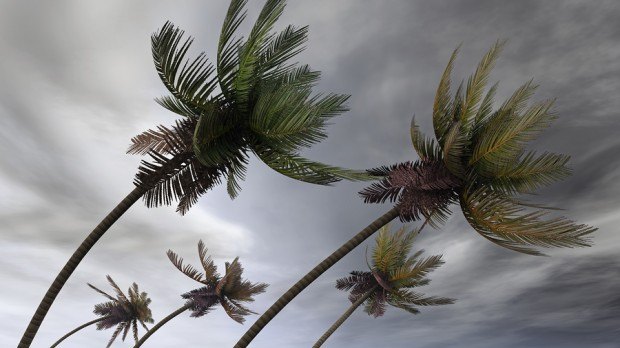The 2015 Atlantic hurricane season may end up being remembered for a subpar number of storms, even though the total still beat early forecasts and more than 50 people died.
The season, which also lags behind in terms of overall power, produced Tropical Storm Erika in August that caused at least 20 deaths on Dominica. In October, Hurricane Joaquin sank the freighter El Faro with the loss of 33 in the Bahamas.
“That is a lot in an El Nino year,” said Jeff Masters, co- founder of Weather Underground in Ann Arbor, Michigan, referring to the Pacific warming phenomenon.
Tropical Storm Kate is the 11th in the Atlantic this year, or one less than the 30-year average. That beats Colorado State University’s outlook that called for eight named storms and the U.S. Climate Prediction Center’s August estimate for a 70 percent chance of six to 10.
Systems get names when their winds reach 39 miles (63 kilometers) per hour, or tropical storm strength.
In terms of total power, the 2015 season looks less impressive. Forecasters gauge the power generated by storms using what they call Accumulated Cyclone Energy, or ACE. It measures the intensity and duration of individual storms, and those figures are added up to get a seasonal total. As of Monday, the Atlantic had a collective ACE of 58, which is much less than the 1981-2010 average of 106, said Phil Klotzbach, lead author of Colorado State’s seasonal forecast.
‘Massive Bulk’
“Joaquin has generated the massive bulk of ACE this year: 29 of 58 units or 50 percent,” Klotzbach said. Unless Kate does something unpredictable, “it is probably only going to generate 1 or 2 ACE before dissipation.”
Kate is something of an anomaly. With the strong El Nino in the Pacific, the jet stream over North America sets up in a way that makes wind shear in the Caribbean too strong for a tropical system to organize during November, Masters said.
“The configuration of the jet this week just left a little hole over the Bahamas,” he said. Spurred by record warm ocean temperatures, the system took off. It isn’t forecast to last, however. Kate will become a low-level hurricane, and then probably will be absorbed by a low-pressure system over the Atlantic by Thursday, the U.S. National Hurricane Center said.
El Nino
El Nino is a warming of the equatorial Pacific that causes weather patterns to shift around the world. The warmer sea surface has help spur typhoon and hurricane development in that basin, leading to a record number of intense storms.
The twists that allowed the number of Atlantic storms to beat the estimates and turned what many thought would be a dull season deadly may prove to be a cautionary tale for the future. It also bore out the warnings from the hurricane center not to underestimate the power of the tropics no matter what the forecast.
“There are a lot of people who didn’t live past 1972, 1983 and 1992 who can’t tell you that they don’t care what the seasonal forecast is,” center Director Rick Knabb said in a June interview. “We lost a lot of lives in those below-average years.”
It looks like 2015 can be added to that list.





















 Is the AI Boom a Bubble Waiting to Pop? Here’s What History Says
Is the AI Boom a Bubble Waiting to Pop? Here’s What History Says  Artificial Intelligence Is Rewriting the Rules for Commercial Lines
Artificial Intelligence Is Rewriting the Rules for Commercial Lines  Breaking: Andersen to Replace Zaffino as CEO of AIG on June 1
Breaking: Andersen to Replace Zaffino as CEO of AIG on June 1  Slideshow: Carrier Management’s 2025 Top Editor’s Picks (Unlocked)
Slideshow: Carrier Management’s 2025 Top Editor’s Picks (Unlocked) 







